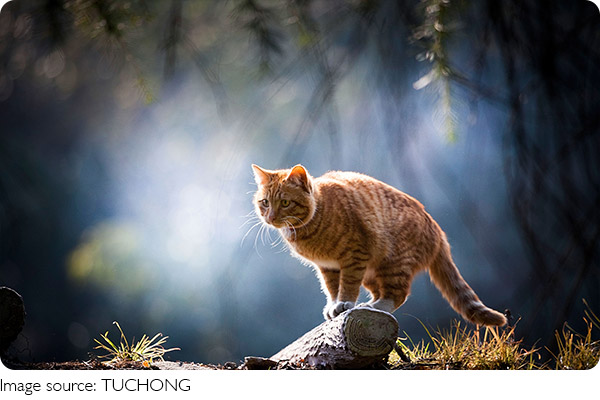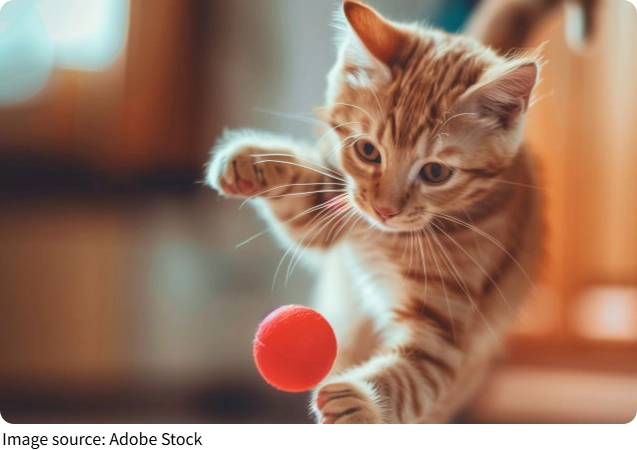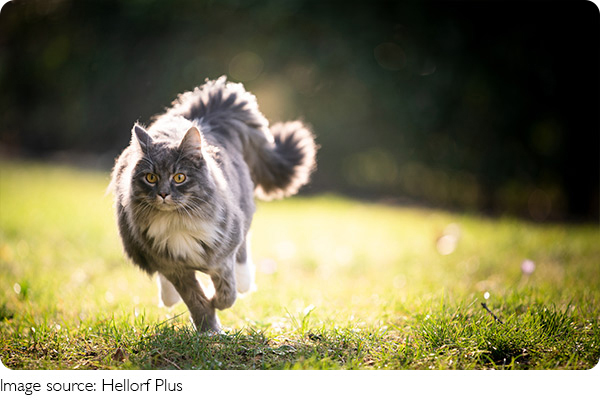Super Cat Jumps

Hey Lykkers, have you ever watched your cat leap onto the fridge or gracefully land on a high shelf and thought—wow, are they part ninja? We’re here today to explore the amazing jumping power of cats.
Although they’re cute and cuddly on the outside, their bodies are like natural spring machines built for power and precision. But believe it or not, even these agile little creatures have their "oops" moments.
Why Cats Jump So Well?
We may see cats as gentle fluff balls, but they’re actually strong and flexible athletes. Their bodies contain over 240 bones, about 40 more than humans, and more than 500 muscles, nearly twice our number. These muscles and bones work together to help cats leap up to 4-5 times their own height!
Cats usually have two jumping styles. One is a still jump—like when they aim for the sunny windowsill. The other is a running leap, often seen when they’re playing or chasing each other. Either way, before a jump, cats will always fix their eyes on the landing spot. This laser focus helps them stay accurate and avoid falling.
The Secret Behind a Perfect Jump
Every smooth leap depends on the teamwork of their strong hind legs, joints, tendons, and muscles. When we see our cats stretch out before jumping, that’s them prepping their whole body—from the hip joints to the toes. The longer and stronger the hind legs, the higher they can jump. Plus, the faster they launch off, the more height they can reach. It’s all about the push-off.

Why Some Cats Struggle to Jump?
But not every cat is a high-jump champion. Let’s look at a few reasons:
1. Breed differences
Some breeds are naturally more active, while others prefer to chill. For example, American Shorthairs are often very athletic, while Persians or Ragdolls enjoy a more relaxed lifestyle. It’s not a flaw—it’s just who they are.
2. Weight issues
Chubby cats may look adorable, but excess weight gets in the way of jumping. Extra weight reduces muscle strength and makes them move less, leading to a cycle of inactivity. On top of that, too much weight can cause health problems like diabetes or liver issues.
3. Age and health
Cats aged 3-5 are usually in their prime. But once they grow older or suffer from improper diets, issues like joint stiffness or muscle loss can appear. Some may also have cartilage or joint diseases. For those kitties, less movement is better.
Strong Jumps Don’t Equal Nine Lives
We’ve all heard stories during lockdowns where people cruelly threw cats from balconies, thinking they would survive because "cats always land on their feet." Let’s be clear—that’s a myth.
Cats do focus on where they’ll land, but falling from great heights, especially without warning, can be fatal. Even if they manage to land on all fours, internal injuries can still happen. And because cats have high pain tolerance, we may not notice anything’s wrong until it’s too late.
Cats Aren’t Daredevils—They Feel Fear Too
Think about how often we hear about cats stuck in trees. Why don’t they just jump down? That’s because they’re scared of the unknown height. Only wild cats familiar with their surroundings or house cats on low trees move confidently.
Just because they’re agile doesn’t mean they’re fearless. A terrified indoor cat might freeze or miscalculate mid-air, leading to serious injuries.

Why Safety Nets Are a Must for Indoor Cats?
So, why do we always recommend installing protective nets on balconies and windows?
First, cats are curious. A bird or a bug outside the window can quickly grab their attention. If there’s no net or screen, they might leap out in pursuit.
Second, when left alone too long—say 7+ hours—cats can get anxious and may try to escape. If windows are open, it’s all too easy for them to fall by accident.
If they drop without locking in a target, the fall can be dangerous. Indoor cats especially may not have the strength to correct mid-air posture.
Care Comes Down to Awareness
Lykkers, as loving pet parents, we must avoid assumptions like “my cat will be fine” or “this window is too low to worry about.” In reality, vets often treat cats who fall from just the 2nd or 3rd floor.
Taking simple steps—like closing a window or setting up a net—can save your cat’s life. Sometimes, all it takes is one careless moment to cause a tragedy. But one small action from us can prevent it.
Let’s take care of our little jumpers. After all, they rely on us more than we realize.
7 Amazing Cat Abilities That PROVE They Have Superpowers
Video by The Purring Journal
-
 Why Cats Rub?Ever wondered why cats love rubbing against us? It's more than affection—here's what those cute head-bumps really mean!
Why Cats Rub?Ever wondered why cats love rubbing against us? It's more than affection—here's what those cute head-bumps really mean! -
 Trim Pet NailsNervous about trimming your pet’s nails? Follow these simple steps to keep them safe, calm, and injury-free at home!
Trim Pet NailsNervous about trimming your pet’s nails? Follow these simple steps to keep them safe, calm, and injury-free at home! -
 Dance of BeautyWhy This Bird’s Dazzling Dance Has Stunned Humans for Thousands of Years!
Dance of BeautyWhy This Bird’s Dazzling Dance Has Stunned Humans for Thousands of Years!